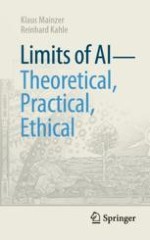2024 | OriginalPaper | Buchkapitel
3. Theoretical Limits
verfasst von : Klaus Mainzer, Reinhard Kahle
Erschienen in: Limits of AI - theoretical, practical, ethical
Verlag: Springer Berlin Heidelberg
Aktivieren Sie unsere intelligente Suche, um passende Fachinhalte oder Patente zu finden.
Wählen Sie Textabschnitte aus um mit Künstlicher Intelligenz passenden Patente zu finden. powered by
Markieren Sie Textabschnitte, um KI-gestützt weitere passende Inhalte zu finden. powered by
Abstract
-
Interviewer: What is your biggest strength?
-
Me: I am an expert in machine learning.
-
Interviewer: What’s 6 + 10?
-
Me: Zero.
-
Interviewer: Nowhere near. It’s 16.
-
Me: Ok, It’s 16.
-
Interviewer: What is 10 + 20?
-
Me: It’s 16.
